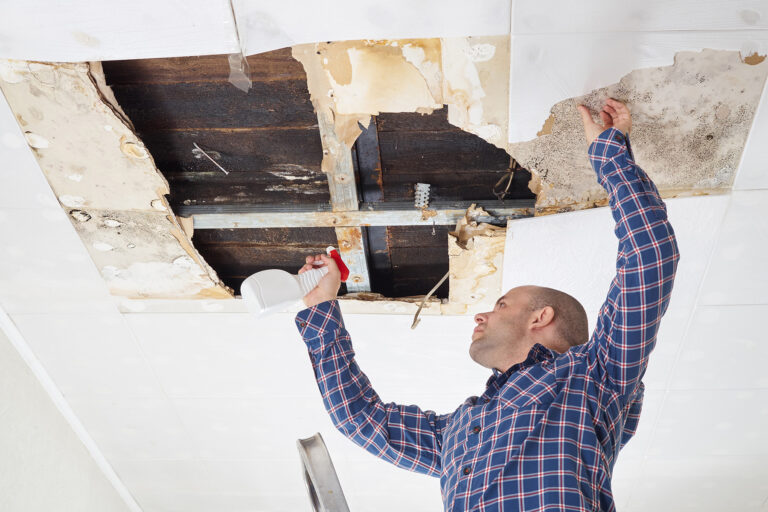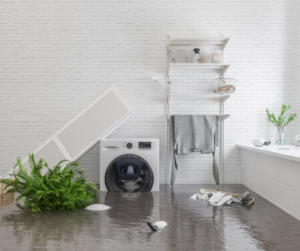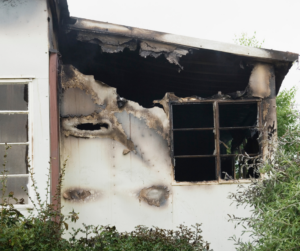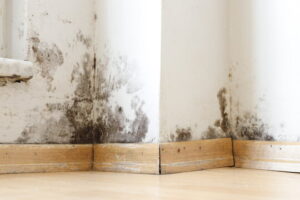Water is essential for life, yet it can be one of the most destructive forces when it comes to your home. From leaking roofs and burst pipes to floods and moisture buildup, water damage can silently wreak havoc on your house, causing structural problems, health hazards, and financial burdens. In this blog, we will explore the various ways water can damage your home and the importance of taking preventative measures to safeguard your property from its silent threat.
1. Roof Leaks and Attic Moisture:
Your home’s roof is the first line of defense against the elements, including rain and snow. Over time, exposure to the elements can lead to wear and tear on the roof, resulting in cracked or missing shingles, damaged flashing, or compromised seals around vents and chimneys. If left unchecked, these issues can lead to roof leaks, allowing water to infiltrate your attic and causing damage to insulation, wooden structures, and even the ceilings below. Moisture in the attic can also lead to mold growth, which poses serious health risks to your family.
2. Plumbing Failures:
Burst pipes, leaky faucets, and faulty plumbing fixtures are common culprits of water damage inside a home. The excess water can seep into walls, flooring, and furniture, causing rot, warping, and weakening of the structural integrity. Furthermore, hidden leaks can go undetected for an extended period, leading to mold growth and creating an unhealthy living environment.
3. Basement Flooding:
Heavy rains, improper drainage, or foundation cracks can result in basement flooding. Water entering the basement can cause irreparable damage to belongings stored there and compromise the foundation’s structural integrity. Prolonged exposure to moisture can lead to the growth of mold and mildew, making the space uninhabitable.
4. Clogged Gutters and Poor Drainage:
Gutters and downspouts are essential for directing rainwater away from your home’s foundation. When these systems become clogged with leaves, debris, or ice, water can overflow and pool around the foundation. As a consequence, the excess moisture can seep into the foundation, leading to cracks and weakening its stability. Additionally, poor landscaping or improper grading around the house can cause water to flow toward the foundation, exacerbating the risk of water damage.
5. Flooding and Natural Disasters:
Natural disasters, such as hurricanes, floods, and flash floods, can be devastating to homes in affected areas. Floodwaters can enter homes, causing widespread damage to walls, flooring, electrical systems, and appliances. Restoration after such events can be lengthy and costly, and in some cases, properties may be irreparably damaged.
Preventative Measures:
While water damage can be unpredictable, several preventative measures can help protect your home from its destructive effects:
- Regularly inspect and maintain your roof to identify and address issues promptly.
- Keep gutters and downspouts clear of debris, and ensure proper drainage away from the foundation.
- Monitor your home’s plumbing for leaks and address them immediately.
- Install a sump pump and consider waterproofing your basement.
- Elevate electrical outlets, switches, and appliances above potential flood levels.
- Seal foundation cracks and gaps to prevent water intrusion.
- Consider installing a water leak detection system that can alert you to potential issues.
Conclusion:
Water damage is a formidable threat to your home, capable of silently causing extensive harm over time. From leaking roofs and burst pipes to floods and basement moisture, water’s destructive potential is undeniable. By taking proactive measures to safeguard your property, you can minimize the risk of water damage and protect your investment in your home. Regular maintenance, prompt repairs, and vigilant monitoring are key to preserving your home’s structural integrity and ensuring a safe and comfortable living environment for you and your loved ones.







Give us a follow!